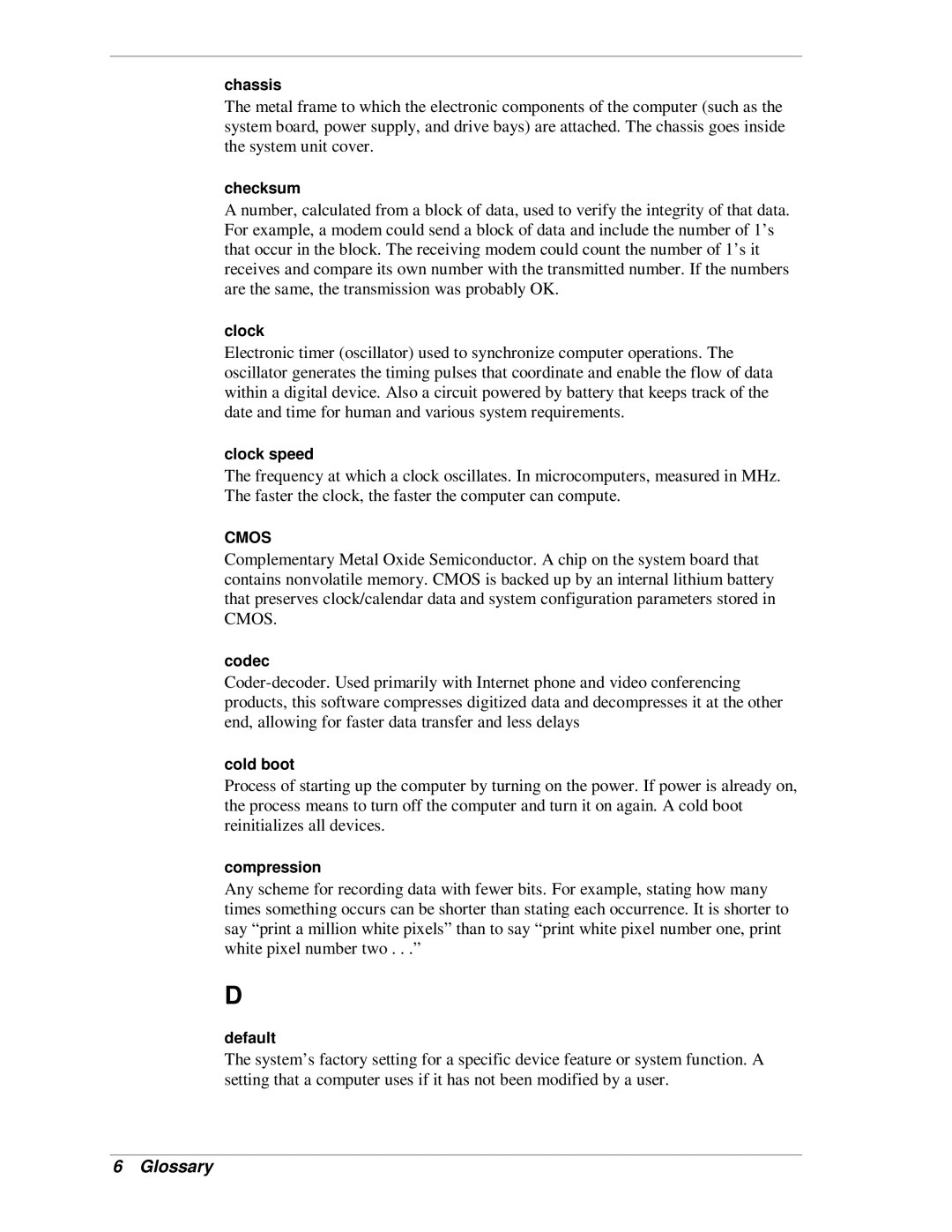
chassis
The metal frame to which the electronic components of the computer (such as the system board, power supply, and drive bays) are attached. The chassis goes inside the system unit cover.
checksum
A number, calculated from a block of data, used to verify the integrity of that data. For example, a modem could send a block of data and include the number of 1’s that occur in the block. The receiving modem could count the number of 1’s it receives and compare its own number with the transmitted number. If the numbers are the same, the transmission was probably OK.
clock
Electronic timer (oscillator) used to synchronize computer operations. The oscillator generates the timing pulses that coordinate and enable the flow of data within a digital device. Also a circuit powered by battery that keeps track of the date and time for human and various system requirements.
clock speed
The frequency at which a clock oscillates. In microcomputers, measured in MHz. The faster the clock, the faster the computer can compute.
CMOS
Complementary Metal Oxide Semiconductor. A chip on the system board that contains nonvolatile memory. CMOS is backed up by an internal lithium battery that preserves clock/calendar data and system configuration parameters stored in CMOS.
codec
cold boot
Process of starting up the computer by turning on the power. If power is already on, the process means to turn off the computer and turn it on again. A cold boot reinitializes all devices.
compression
Any scheme for recording data with fewer bits. For example, stating how many times something occurs can be shorter than stating each occurrence. It is shorter to say “print a million white pixels” than to say “print white pixel number one, print white pixel number two . . .”
D
default
The system’s factory setting for a specific device feature or system function. A setting that a computer uses if it has not been modified by a user.
